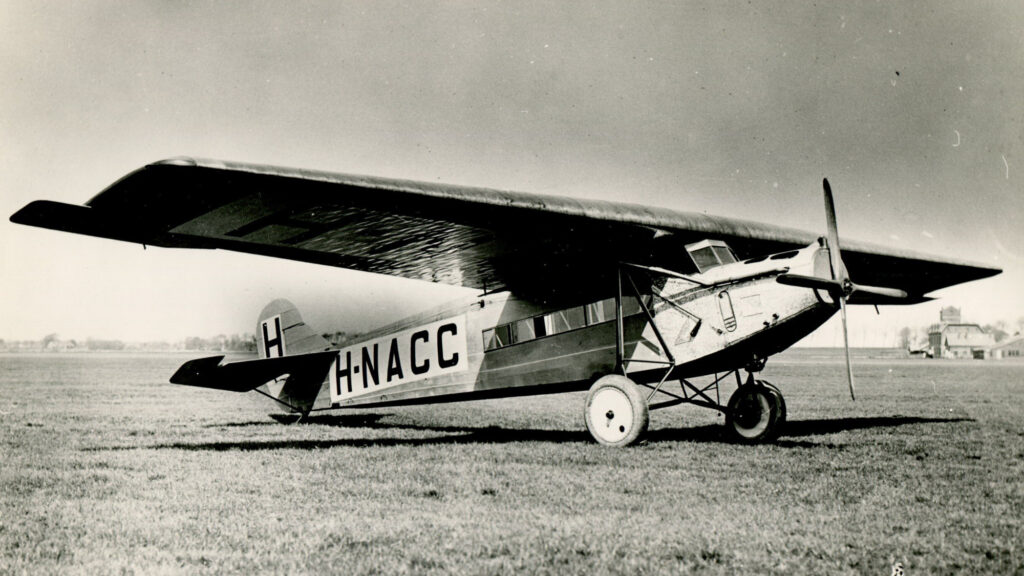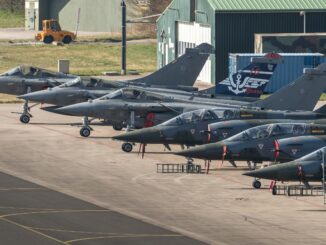 On 24th November 1924, Fokker F.VII airliner of the KLM Dutch airline landed in Jakarta, successfully completing the first air bridge between the Netherlands and the Dutch East indies.
On 24th November 1924, Fokker F.VII airliner of the KLM Dutch airline landed in Jakarta, successfully completing the first air bridge between the Netherlands and the Dutch East indies.
The first decade after the Great War was marked by rapid development of aviation. Each year was bringing new records of speed, distance or flight endurance, boosting aircraft development and improving their efficiency and reliability.
Airline companies were established one after another continuously improving their networks of domestic and international connections. By mid-decade, commercial air routes covered most of Europe, the Middle East, large areas of coastal regions of Australia, Brazil or Western Africa, as well as connected East and West coast of the United States.
In 1919, two aviation milestones were achieved in modified Vickers Vimy bombers. In June, John Alcock and Arthur Brown completed the first non-stop flight across the Atlantic. Then, at the end of that year, the Smith brothers flew from England to Australia. Finally, in 1924, the eight-man team of the United States Army Air Service became the first to circumnavigate the world in 175 days, covering the distance of more than 42,000 kilometres.
Although long-distance flights became very popular at that time, they had little impact on commercial aviation. In 1924, the same year the USAAS crew flew around the world, there was no possibility to fly across the Europe with any regular airline flight. At that time, commercial routes rarely exceeded 300-400 kilometres and avoided long flights over open sea. It was possible to fly, for example, from London to Stockholm, but the route required several stopovers and led through Rotterdam, Berlin, Danzig (now Gdańsk, in Poland), Riga and Helsinki.
Meanwhile in the Netherlands, the idea was born to establish an air connection between the country and its largest colonial area, the Dutch East Indies. At that time, sea journey from Europe to the Indonesian archipelago lasted several weeks and an aeroplane seemed to be very promising alternative to make the trip much shorter.

In 1923, Flight Committee for the Dutch East Indies (Comité Vliegtocht Nederlandsch-Indies) was established. Shortly after, the idea of long-distance flight to the Dutch East Indies gained support from two big Dutch aviation companies – KLM Royal Dutch Airlines (Koninklijke Luchtvaart Maatschappij N.V. ), founded in 1919 and currently being the oldest still operating airline in the world, and the Royal Dutch Aircraft Factory Fokker (N.V. Koninklijke Nederlandse Vliegtuigenfabriek Fokker) aviation manufacturer.
It was very important for the Dutch to made that flight in a domestically manufactured aeroplane and it was secured by Fokker. The company assigned one of its newest aircraft for that task – Fokker F.VII passenger airliner that made its first flight just a few months eralier, in April of 1924. The flying crew for the pioneering flight was provided by the KLM airline and included Capt. Jan Thomassen (aka Thuessink van der Hoop), Lt. Van Weerden Poelman and flight engineer Van de Broeke.
Although the F.VII is commonly known as trimotor aircraft, the first five examples of the aeroplane were built in single-engine configuration, including the one registered H-NAAC that was assigned for the pioneering flight.
On 1st October 1924, the Dutch crew started their long journey to Batavia (now Jakarta, in Indonesia), the capital of the Dutch East Indies. However, the trip was interrupted just after two days due to engine failure. The Fokker F.VII made an emergency landing in Plovdiv, Bulgaria, suffering minor damage. Shortly after, it turned out that the engine was beyond any repair and had to be replaced by a new one.
When that message reached the Netherlands, it immediately resulted in a surge of solidarity. Money for purchase of the new engine were collected among readers of Het Leven, one of the most renowned Dutch illustrated magazines. At the end of the month, the engine was bought and sent to Bulgaria.
On 2nd November 1924, the H-NAAC began the second stage of its journey and successfully reached Jakarta on 24th November. During that record flight, the Fokker F.VII and its crew covered a distance of more than 15,000 kilometres in 55 days, spending 127 hours in the air.

After completing the flight, the H-NACC was disassembled and sent back to the Netherlands by ship, together with its crew. Nevertheless, the three Dutch airmen proved the possibility to bridge the country and its biggest colony by air. It allowed the two aforementioned Dutch companies for further development of that idea, finally leading to establishment of scheduled commercial service between Amsterdam and Jakarta in 1929
And coming back to the Fokker F.VII – in 1925, Anthony Fokker visited the United States and came with an idea to convert the aircraft into trimotor configuration. That task was shortly after completed by Reinhold Platz, the Fokker company chief designer.
In the next few years, the Fokker Trimotor became one of the favourite aircraft used by aviation pioneers.
In 1926, Richard E. Byrd claimed to fly over the North Pole in the F.VII. Next year, the Fokker named ´Bird of Paradise´ was used with the first transpacific flight from the USA to Hawaii and another aeroplane of that type made the first transatlantic mail flight. In 1928, the Fokker Trimotor known as ´Southern Cross´ completed the first transpacific flight from the USA to Australia. And these are being just a few examples.
The Fokker F.VII named ´Question Mark´, was also used by the US Army Air Corps during one of early aerial refuelling experiments, setting the flight endurance record of 151 hours non-stop.

Cover photo: Fokker F.VII H-NAAC (source: Collection Netherlands Institute of Military History, photo 2161_026547)



